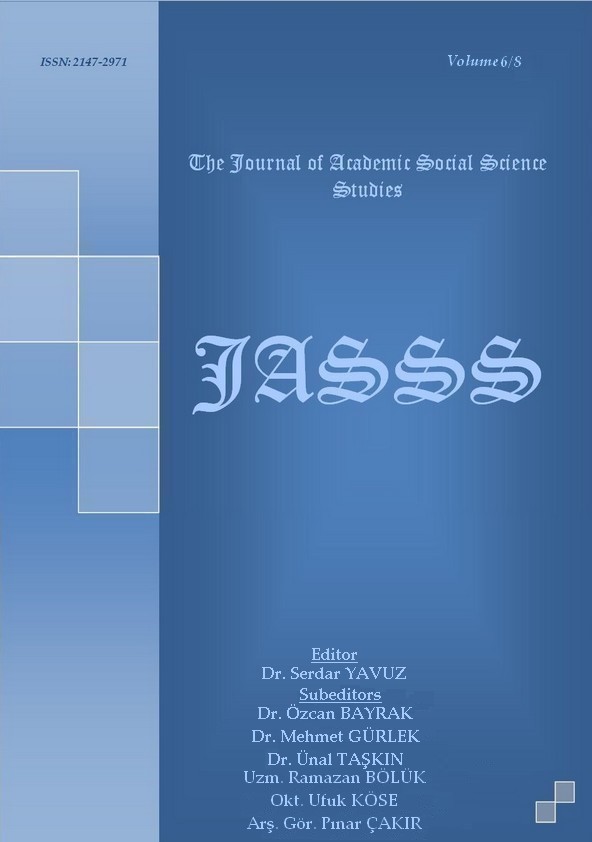Author :
Abstract
Hititler Dönemi’nde Anadolu’da uygulanan ekonomik sistemde en önemli değişim araçları olarak metal kullanımını görmekteyiz. Aynı ekonomik sistem, değişim araçlarında sabit eşitliği oluşturmak amacıyla kontrol mekanizmaları anlamında çeşitli ağırlık ve ölçü birimleri geliştirmiştir. Erken Tunç Çağlarından beri Anadolu’nun çeşitli yerleşimlerinde ele geçen ağırlık taşları Anadolu ve diğer bölgeler arasındaki ticari ilişkileri açığa çıkarması bakımından önem taşımakta olup, Hititler Dönemi’nde ele geçen çeşitli ağırlıklar ve ölçü birimlerinin kullanımına dair kanıt oluşturan filolojik belgeler dönemin Anadolu’sunda kontrol mekanizmalarının nasıl ve kimin tarafından işletildiğine dair önemli ipuçları sunmaktadır. Hititçe çivi yazılı belgelerde, ağırlıkların ve ölçü birimlerinin kullanım alanları ve yasalarla belirlenmiş ücretlendirme yöntemlerine baktığımızda, kontrol mekanizmaları olarak kullanılan ağırlık ve ölçü birimleri, büyük oranda merkezi yapılar, saray ya da tapınaklar tarafından üretilip geliştirilmişlerdir. Hititçe adak metinlerinde, diplomatik metinlerde ya da dua metinlerinde saraya ya da tapınağa sunulan malların ağırlıkları ve ölçüleri çok sıkı anlamda denetlenip kaydedilmiştir. Ağırlık ve ölçü sistemleri çeşitli malların sabit eşit olarak değişimde kullanılmasına ve malların değişim aracı değerinin ortaya çıkmasına hizmet etmiştir. Bu anlamda Hititler Dönemi’nde en önemli değişim aracı gümüş olmuştur. 1 šekel gümüşün satın alma gücü hem teoride hem de pratikte malların dolaşımını hesaplamak için en önemli kıstas olmuştur. Gümüşün dışında vergi ödemelerinde, ücret ya da mükâfat olarak ve diplomatik hediyeleşmede hemen hemen tüm metaller değişim aracı işlevi görmüştür. Dolaşıma giren metaller külçe veya “bitmiş mal” (mal para) formunda sabit eşit olarak kullanılmışlardır.
Keywords
Abstract
We observe the use of metal as the most important mediums of exchange in the economic system implemented in Anatolia in the Hittite Period. The same economic system developed various units of weight and measurement in the sense of control mechanisms to create fixed equivalence in the mediums of exchange. Weighting stones obtained in various settlements of Anatolia since the Early Bronze Ages are of importance since they reveal the commercial relationships between Anatolia and the other regions, and the philological documents proving the use of various weights and units of measurement obtained from the Hittite Period provide important clues about how and by whom the control mechanisms were operated in Anatolia of the Period. When we observe the areas of use of the weights and the units of measurement and the methods of pricing determined by the laws in the cuneiform scripts in Hittite language, the units of weight and measurement used as control mechanisms were developed to a large extent by central structures, palaces or temples. In the vow scripts, diplomatic texts or pray texts in Hittite language, the weights and the measurements of the goods presented to the palaces or the temples were inspected and recorded in a very strict sense. Weight and measurement systems served the use of various goods for the exchange as a fixed equivalent and the emergence of the value of the goods in terms of mediums of exchange. In this sense, the most important medium of exchange became silver in the Hittite Period. The purchasing power of 1 šekel silver became the most important criterion to calculate the circulation of the goods both in theory and in practice. Other than silver, almost all metals functioned as mediums of exchange as salaries or prizes and exchange of diplomatic presents. Metals that got into the circulation were used as a fixed equivalent in the form of nuggets or “finished goods” (commodity money).





